
Interior
The side panels utilise captive thumbscrews so there's no need to worry about losing them. The notches and rails system was a bit tight on our sample, but this is one of the pre-production issues set to be fixed. This being the P400S, you're paying a bit more cash for noise deadening material, which is found behind both side panels as well as the front one, which pulls off cleanly, and the roof blanking plates.Inside, the case begins to look a lot more Phanteks, and that's no bad thing. There's a full length, porous PSU cover to hide the PSU and the associated mess of cables – the NZXT S340 showed us that even less expensive cases can still have tidy interiors, and Phanteks is following suit. Phanteks includes its usual finishing touches like pre-installed motherboard standoffs, PCI bracket thumbscrews and all black internal cables.
The main, upper cavity is extremely spacious thanks to there being no drive cages here whatsoever, which means no optical drive support. That said, you can install up to four HDDs or SSDs here by purchasing Phanteks' drive trays, which clip onto hooks at the front of the motherboard tray; a system employed in some of its other cases too. As it comes, GPU clearance stands at a whopping 395mm – this will drop to 280mm with a hard disk tray installed but two of the four positions for these are totally out of the way of the expansion card area anyway. Large CPU coolers are also catered for with 170mm of room, so installing high-end hardware is certainly feasible.
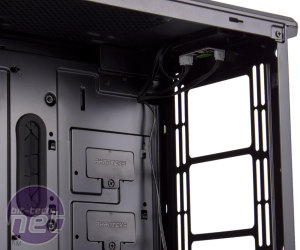
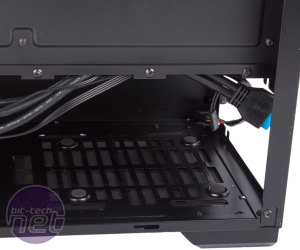
Click to enlarge - Here you can see the mounting points for the optional HDD brackets (left) and the PSU mounting area in the lower chamber (right)
Turning the case round gives you a look into the lower cavity, where there's plenty of room for full-length PSUs, with little foam pads as well to help stop the PSU vibrating the chassis. At the front, there's a two-bay 3.5in/2.5in HDD cage that uses Phanteks' standard plastic drive trays with tool-free locking arms and anti-vibration mounts for 3.5in devices.
There are also two dedicated 2.5in trays on the back of the motherboard tray which use the excellent, tool-free Drop-N-Lock system of rubber grommets to secure the trays. It's great to see features of much more premium Phanteks cases included in its lowest end products. In fairness, this approach will save the company money on production and tooling costs, but the point still stands.
Unlike most Phanteks cases, the Eclipse P400 is not really designed to house custom water-cooling loops. As such, you won't find dedicated radiator or pump mounts here. The P400 and P400S still support all-in-one liquid coolers though, albeit not in the roof fan mounts due to lack of clearance. Instead, the front fan mounting area is used. By default, both 240mm and 280mm radiators will fit here, though the latter is definitely a squeeze. There was just enough height for an NZXT Kraken X61 to fit, but other models might be too big. Thankfully, the front part of the PSU cover can be unscrewed and removed giving you access to the case's full height and ensuring support for all 280mm radiators and even 360mm ones. However, to ensure you have enough depth for these, the lower HDD cage will need to be removed and, since the radiator and fan combination will impede on the upper HDD tray mounting space, you'll have no room for 3.5in devices if you go this route. Even so, this is more water-cooling support than that offered by the S340, if only a little. Remember also that a radiator here will typically mean blowing warm air into the case, so good GPU cooling and exhaust airflow is a very good idea.
Even in its least expensive ATX chassis to date, Phanteks continues to shame its competitors when it comes to cable management. Not only are the LED and fan cables all connected out of the box, meaning you only have to connect a single 12V SATA connection to get everything working, but all cables are neatly routed and strapped down with the awesome Velcro cable ties that we've loved ever since their introduction with the Enthoo Primo. The cable channels and the two main routing holes, which are even fitted with rubber grommets, are admittedly small, but you do have up to 25mm of space for cable management (a little less on the P400S). With secondary routing holes both above and below the motherboard, it certainly isn't difficult to build a very tidy looking system in the P400, even if it is a touch more fiddly than previous efforts due to size limitations.

MSI MPG Velox 100R Chassis Review
October 14 2021 | 15:04

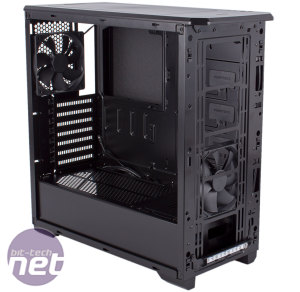
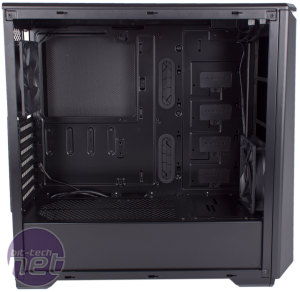

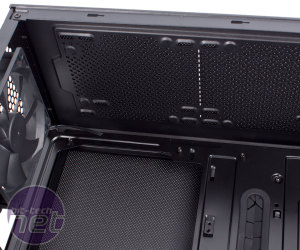
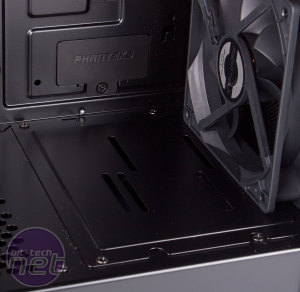
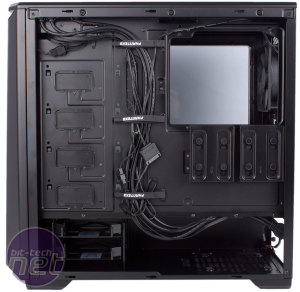
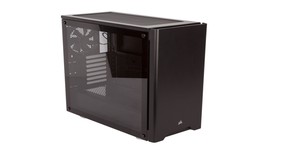
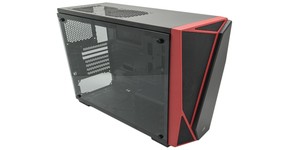
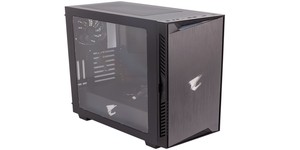





Want to comment? Please log in.